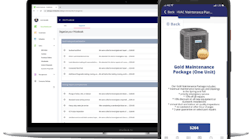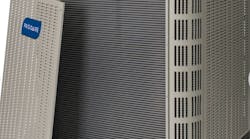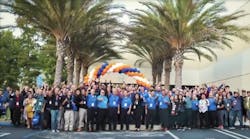How did it go? It almost seems ages away, and yet last fall, it appeared that some people were scrambling to decide how to deal with the issue of the refrigerant transition. Indeed, HVACR Distribution magazine ran a special issue in January dealing with this very topic.
The Refrigeration Systems Council, under the direction of chair Jon Perry, took the initiative to poll members for some feedback about their experiences. They asked three important questions, and we have provided their answers below. Tom Peric, editor
The Questions:
Q1: did the transition in January from R-22 to R-410-A go for your company?Q2: Were there any significant issues from your standpoint or the end users regarding this transition?
Q3: In retrospect, would you have done anything differently, and what do you think will be the long-term effects of this transition?
The Responses:
A1: Overall, I feel it went pretty well. From an equipment standpoint, we took a pretty conservative approach, based on the initial rule-making by the EPA. It seemed the appropriate thing to do, especially with the final rule- making by the EPA not coming out until December 2009. We did a good job of updating our teams on what was happening and educating them on R-410A.A2: No major issues. It certainly would have been better for everyone to have the ruling from the EPA completed much sooner! I understand there were a number of factors that contributed to this delay, but regardless of that, an earlier decision would have been much better. Education for the contractor base is always critical when this type of transition takes place. With the tightening of R-22 production levels, there was some early concern about shortages and escalating prices. So far, we have not seen either as a big issue. There have been some supply issues with R-410A into the market.
A3: Based on the information we had, I do not see us doing much differently. I think the long-term effects of the transition will have a big driving force from standard supply and demand patterns. The supply side of R-22 is going to continue to decrease. If the replacement market of R-22 to R-410A equipment does not accelerate fast enough, the demand side of R-22 refrigerant will be higher than supply. Alternative solutions to getting R-22 refrigerant will become much more prevalent and important such as the current trend and need for reclaimed R-22. The long-term effects of the transition will be similar to what happened in the past. I think a good question for the future is, “When will the next refrigerant/equipment replacement for R-410A be here?” If the transition cycle really starts to compress itself in the future, that changes a lot of things.
Jon Perry, president
C.C. Dickson Co.
A1: In general, I think the transition went well. This was not a surprise to the industry and, for the most part, everyone was prepared.
A2: I believe the wholesalers that ran out of R-22 equipment may have seen a gap in sales if their competition had had inventory left. There were quite a few contractors and end users that, given the choice, chose to stay with R-22. I also think it will take some time to see significant sales of R-410A in the wholesale aftermarket because the service demand is not there. All the 410A in use is in new equipment installations and should not need to be serviced for some time.
A3: I believe the wholesale sales of R-410A will take a considerable amount of time to catch up to R-22. The service demand should be years down the road.
Bill Bergamini, president
ILLCO Inc.
A1: I believe we were well prepared for the transition and that it went very smoothly. We had been in regular dialogue with the major OEMs over the past two years regarding their transition plans/forecasts to make sure that we had blend components and logistics lined up to accommodate their needs. I am not aware of any OEM equipment supply disruptions that were a result of an interruption in R-410A supply this year.
Page 2 of 2
A2: The most significant industry challenge in 2010 has been product supply. Global demand for HFC blends increased significantly in 2010 due to: 1) the U.S. phase-out of R-22 in new equipment resulting in increased R-410A demand, 2) increased demand for new equipment as the global economy recovered from the recession, coupled with tax incentives offered here in the United States for conversions to higher-energy-efficient equipment, and 3) the European F-Gas regulation that banned the use of virgin R-22 for new equipment and service in Europe effective 01/01/2010. At the same time, feedstock supplies (especially chlorocarbons in China) to make the HFC blend components have been constrained beyond our expectations.
As a result of these industry challenges, manufacturers have required extended order lead times from their customers to help manage supply chains and avoid supply disruptions.
A3: All things considered, I believe the transition went smoothly. As with any major industry conversion, the key success factor in this transition has been consistent, open dialogue between all levels in the supply chain. Having a clear picture from our customers as to their plans and expectations helps us to effectively plan for raw materials supply, production and logistics capabilities to meet the market need. While we anticipate that raw material supplies will remain snug for 2011, we hope to avoid the very extended order lead times that were necessary in 2010. We remain committed to exceeding our customers’ expectations as a supplier of high-quality refrigerants in this industry.
James E. Bachman, national sales and marketing manager
DuPont
A1: Honeywell invented R-410A and has made significant investments in R-410A production, so we have been focused on this transition for quite some time. We have been preparing internally and working with the entire industry to ensure that they were prepared. With specific regard to HARDI and its members, we have been working for the last several years to deliver educational programs to contractors. Honeywell has invested time and resources to ensure a smooth industry transition in January 2010.
A2: AWe continue to respond to requests for technical information on R-410A systems, so we know that we did not get to everybody prior to 2010. Honeywell Genetron responded to this issue by conducting webinars and other R-410A training sessions. One example is Honeywell’s spring 2010 R-410A webinar. This webinar had record attendance; so there continues to be strong interest in the subject. We are pleased with the comfort level that contractors have with R-410A systems but know that educational work remains. We will continue with our educational efforts until they are no longer required.
A3: The transition, combined with the global economic recovery around the world, strained the supply chain of the industry. Working closer with industry, particularly our fellow HARDI members, to get a better idea of the demand profile of R-410A would have been helpful. The transition went about as smoothly as prior transitions in other industries for ODP materials to non-ODP materials. The policy that the U.S. EPA uses (where the agency provides advance notice for regulated changes and lets industry handle the communication and preparation) is a good one and has worked particularly well in our industry. The long-term effects of this transition will reinforce the positive nature of the regulatory process and enable us to do an even better job next time.
Chris LaPietra, marketing manager/refrigerants
Honeywell
A1: The transition went well as our investments in the production of both 32 and 125 positioned us to be ready to handle the anticipated growth in R-410A. With R-22, we had taken the necessary steps with production and our reclamation programs to ensure that our supply would be sufficient to handle our customers’ demands.
A2: Yes, raw materials became very tight in supply, and thus demand increase caused extended lead times as producers struggled to manufacture the components for R-410A as well as other refrigerant blends. Lead times still are extended because the raw material issues still exist today.
A3: Had there been any insight into the raw material issues heading into this year, we would have taken steps in 2009 to prepare for the short supply of 2010 differently than we did, as nobody anticipated the issue we have today with the base components.
Sam Roti, refrigerant sales manager
Fluorochemicals Division
Arkema
A1: The R-410A transition was very smooth on the residential side of the business but a little more difficult on the commercial side. The residential dealers and manufacturers embraced R-410A early and, in some cases, used it as an effective sales tool. Manufacturers seemed to spend so much time on residential product they had little time to transition commercial products. Lead times on R-410A commercial equipment did extend past normal for the first half of the year.
A2: We had no significant issues regarding the transition.
A3: I think our transition went about as well as product transitions go. The issue with all transitions is inventory. We tried to have similar amounts of coils to condensing units to service our customers but tried not to end up with too much of one or the other. I think, in the long term, we will gain efficiency and comfort with R-410A, especially in heat pumps.
Frank Meier, president
Meier Supply Co.





